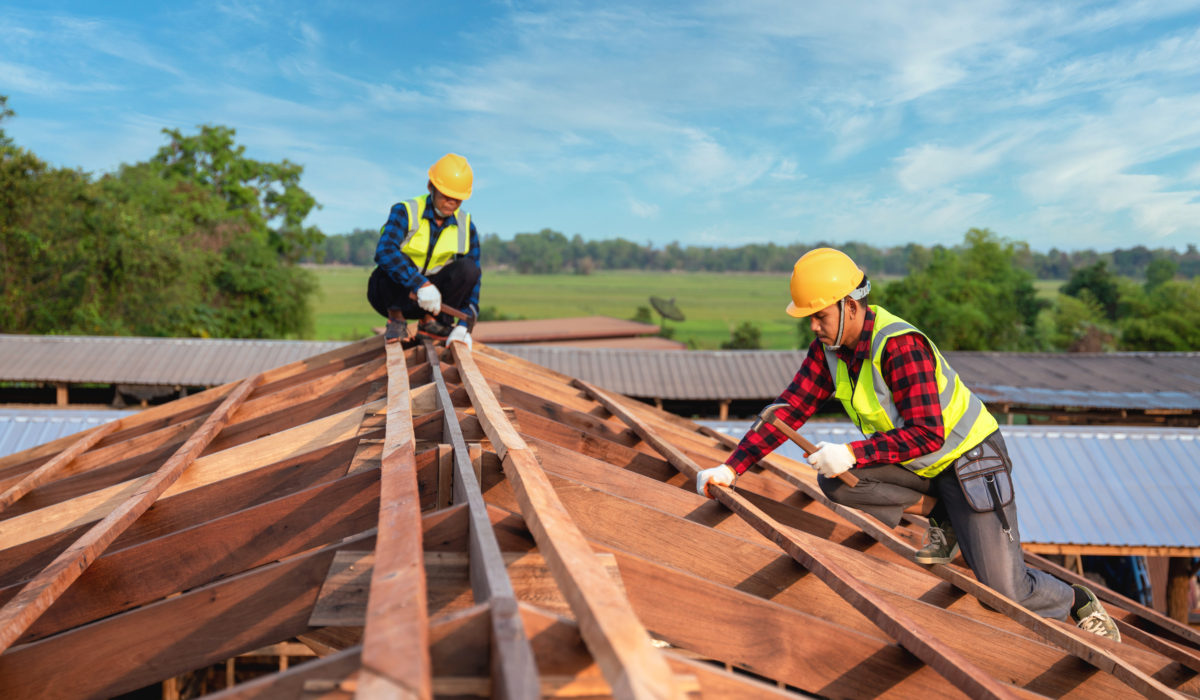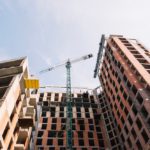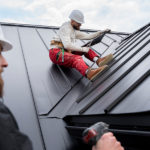What is Residential Roofing? Here’s What You Need to Know
Your roof faces constant exposure to harsh elements, leading to wear and tear that worsens over time if neglected. This can result in various problems, eventually leading to premature roof failure. Therefore, get a consultation from the best residential roofing services in NY to safeguard yourself and your house. Your roof is a substantial investment, so it’s crucial to understand how to maintain it properly to maximize its lifespan.
We have prepared this introductory guide to provide you with essential information on:
- Roof repair and replacement
- Roof inspection and maintenance
- Restoring storm damage
- Key components of a residential roof
1. Roof Repair and Replacement:
Depending on the extent of damage your roof has sustained, your contractor may recommend either roof repair or replacement. But how do you decide which solution is more suitable?
Roof repair is the right choice when your roof has incurred minimal damage, such as loose flashing and torn shingles due to strong winds. In such cases, your contractor can replace the damaged shingles, repair the flashing, and seal any potential roof openings.
Not every roof leak necessitates a full roof replacement. If the damage is limited to a small area of your home, repair is sufficient. Your residential roofer can identify the source of the leak and perform the necessary patchwork.
The same applies to relatively new roofing systems. For example, asphalt shingles can last up to 20 years. If your roof isn’t close to that age, it likely still possesses most of its weather-resistant qualities and only requires minor fixes to maintain its appearance and performance.
Why opt for roof repair?
It is a significantly more cost-effective solution than a complete roof replacement. Roof repairs also restore your roof’s performance capabilities, extending its lifespan.
Roof replacement is the better choice when your roof is past its prime. Signs include curling, buckling, and cracking shingles, indicating that the protective granules, which guard against extreme weather, have worn off.
Other concerning indicators include large patches of missing shingles, recurring leaks throughout your home, and severe moisture damage on the roof deck. The presence of mold and mildew in your attic is another sign that it’s time for a new roof.
Why is roof replacement beneficial?
It allows you to take advantage of the latest roofing technologies. Modern roofing materials are designed to offer cost-effective protection against weather conditions. You can also benefit from energy-efficient features, such as reflective asphalt shingles, which reduce your energy consumption.
A new roof not only promises durability but also customization options, including various colors, textures, high-definition designs, and thicknesses.
When considering this upgrade, remember to
- Choose roofing materials that match your local weather patterns.
- Select materials that complement your home’s style and exterior color scheme.
- Hire an experienced contractor for professional installation.
- Ensure your new roof comes with robust warranties covering both materials and installation.
2. Roof Inspection and Maintenance:
To minimize home improvement expenses, consider preventive measures to prevent issues from emerging in the first place. This is especially crucial for your roof, a critical component that guards against the elements. Periodically assess its condition, especially after severe weather events. Even if a storm seems to pass without noticeable damage, your roof may still be affected.
Early detection of damage is vital to prevent issues from worsening. Professional roof inspections can help in this regard. Expert roofers are well-trained to spot even the slightest damage signs and can provide an accurate assessment of your roof’s condition.
Interior Roof Inspection-
A comprehensive interior roof inspection entails an attic examination to check insulation and ventilation. Proper insulation maintains expected R-values and ensures adequate ventilation. This leads to consistent thermal performance, preventing roof wear, and reducing energy costs. Your inspector will also look for moisture-related issues, water damage, and sagging on the roof deck.
Exterior Roof Inspection-
A thorough exterior inspection requires your contractor to examine the wear and tear on your roof, addressing issues such as leaks, loose or torn shingles, and algae growth. They will also pay close attention to flashing, a crucial element in preventing leaks around chimneys, valleys, dormers, skylights, vent pipes, and sidewalls.
Action Plan for Immediate Problem Resolution-
Following the inspection, your roofing contractor will develop an action plan for immediate problem resolution, providing a detailed estimate and recommended solutions. Professional roof inspections prevent damage from escalating and mitigate the need for costly repairs or early replacement. Regular roof maintenance is essential to ensure the longevity and performance of your roof.
Enlist a comprehensive roof maintenance plan from your contractor to further protect your system. A maintenance plan involves a thorough inspection by a trained roofer, making it easier to detect issues early and perform more manageable repairs. It also keeps your roof free from debris, preventing material damage and indoor water leaks. Roof inspection and maintenance are essential steps in preserving a durable and long-lasting roof.
3. Storm Damage Restoration:
While roofs are designed to withstand harsh weather conditions, even the sturdiest ones can incur damage during intense storms. If you suspect your roof has been affected by severe weather, conduct a swift inspection, even if no visible damage is present.
Roof leaks might not manifest immediately.
Wind Damage-
Strong winds can lift shingles from the roof deck. In some cases, the damage may be less visible, with winds loosening shingles. Eventually, this leads to shingles tearing free during future storms.
Hail Damage-
Hailstorms can harm your roof on impact. Similar to wind damage, hail-related damage might not be immediately apparent. Small cracks and dents can appear, expanding over time and allowing water to infiltrate your home.
After severe storms, schedule a professional inspection, as even unapparent damage can evolve into substantial problems. Avoid the risk of serious issues by taking prompt action.
Hire a Reputable roofing Contractor-
Address storm damage by hiring a reputable roofing contractor for repair and restoration work. Additionally, seek a contractor capable of handling your insurance claims, an essential part of the storm damage restoration process. By doing so, you can secure compensation for necessary repair work.
Roofing companies And Insurance Companies:
Choose a roofing company experienced in working with various insurance companies, making the process smoother. They will identify roof and home damage, document their findings, and assist in filing your claim. They act as intermediaries between you and the insurance adjuster, confirming the coverage under your policy.
Once all necessary steps are completed, the contractor will undertake the required repair and restoration work, maintaining your home’s structural integrity and your roof’s performance.
Why Hire a Professional?
Any roofing job, whether repair or replacement, requires precision. Training, experience, and knowledge of safety practices are essential for successful completion. Untrained individuals may make costly mistakes and inadvertently damage their property. Professionals also provide valuable assistance when dealing with insurance claims.
Understanding residential roofing is beneficial when you encounter issues with your system. Knowing what to expect and how to address concerns ensures a smoother process.
Basic Residential Roof Components:
When considering hiring a roofing company, understanding the components of a residential roof is useful. A residential roof is more than just a protective layer; it is a complex system designed to shield, insulate, and enhance your home’s aesthetics.
There is more to your roof than meets the eye. All roofs include:
- Roof decking
- Underlayment
- Roof covering
- Flashing
- Roof vents
- Gutters and downspouts
Here’s an in-depth look at each component:
1. Roof Decking-
The roof decking, usually made of plywood or oriented strand board, serves as the foundation of your roof. It provides structural support and acts as a barrier between the internal structure of your home and the external roofing materials.
2. Underlayment-
The underlayment functions as a protective barrier, a water-resistant layer placed directly on the roof decking. It prevents water from infiltrating your home, particularly during heavy rain or snow, and offers an additional layer of insulation, helping to regulate the indoor temperature.
3. Roof Covering-
The roof covering is the visible part of the roof from the street. Whether you have asphalt shingles, wood shakes, metal panels, clay tiles, or another material, this outer layer serves as your home’s primary defense against the elements. It is essential to choose a material that complements your home’s aesthetics and can withstand Texas’s varied weather conditions.
4. Flashing-
Flashing consists of thin, typically metal, pieces installed at roof intersections or joints. Its role is to direct water away from vulnerable areas to prevent leaks through gaps and crevices. Flashing is commonly found around features such as chimneys, skylights, and roof valleys.
5. Roof Vents-
Proper ventilation is vital for any home. Roof vents help regulate attic temperature and moisture levels, contributing to the roof’s longevity. These vents facilitate the escape of hot air during the summer and cold air during the winter, reducing energy expenses.
6. Gutters and Downspouts:
Although not part of the roof, gutters and downspouts are essential for the roofing system. They channel water away from your home’s foundation, preventing potential damage. Regular maintenance is necessary to ensure they remain clear of debris and function correctly, especially during heavy rainfall.
The Way Forward:
In summary, maintaining your residential roofing service New York is crucial to prolonging its life and protecting your home. Regular inspections and maintenance can help you detect issues early, and swift action can prevent small problems from becoming major, costly repairs. Understanding the key components of your roof will also help you make informed decisions when it comes to repairs or replacements.



